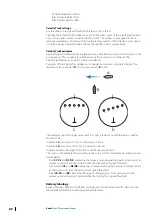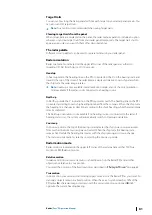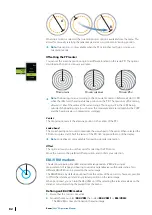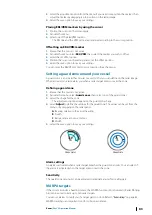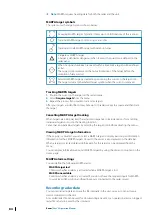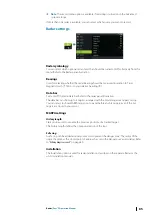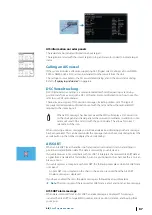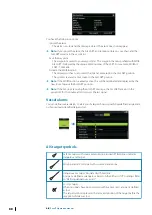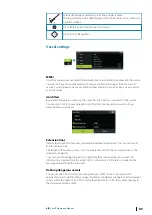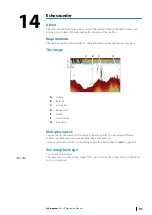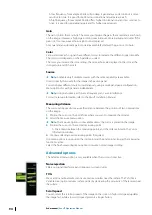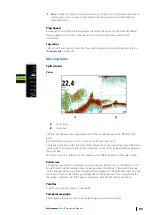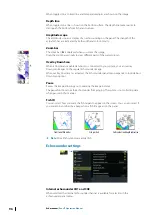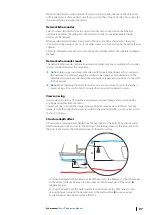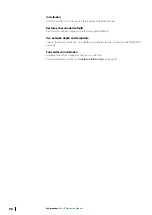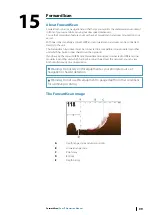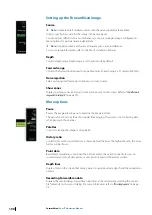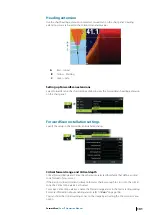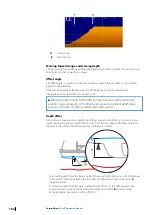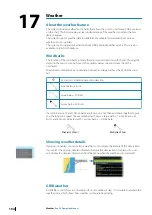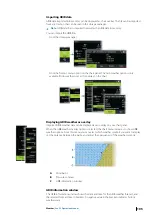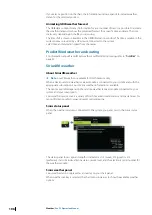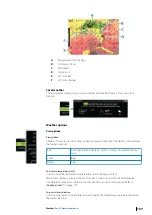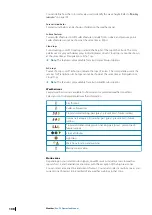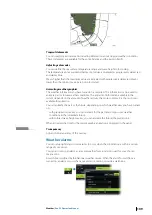
•
A low frequency, for example 50 kHz, will go deep. It generates a wide cone but is more
sensitive to noise. It is good for bottom discrimination and wide area search.
•
A high frequency, for example 200 kHz, offers higher discrimination and is less sensitive to
noise. It is good for separating targets and for higher speed vessels.
Gain
The gain controls the sensitivity. The more you increase the gain, the more details are shown
on the image. However, a higher gain setting may introduce more background clutter. If the
gain is set too low, weak echoes might not be displayed.
A manual and an automatic gain mode are available. By default, the gain is set to Auto.
Color
Strong and weak echo signals have different colors to indicate the different signal strengths.
The colors used depend on which palette you select.
The more you increase the color setting, the more echoes are displayed in the color at the
strong return end of the scale.
Source
Ú
Note:
Available only if multiple sources with the same capability are available.
Used to specify the source for the image in the active panel.
You can display different sources simultaneously, using a multi-panel page configuration.
Menu options for each panel are independent.
Ú
Note:
Using transducers at the same frequency can cause interference.
For source setup information, refer to the Zeus³S Installation Manual.
Measuring distance
The cursor can be used to measure the distance between the positions of two observations
on the image.
1.
Position the cursor on the point from where you want to measure the distance
2.
Select the measure menu option
Ú
Note:
The measure option is not available unless the cursor is placed on the image.
3.
Position the cursor on the second measuring point
- A line is drawn between the measuring points, and the distance listed in the Cursor
Information window
4.
Continue selecting new measuring points if required
Use menu options to re-position the start point and the end point as long as the measuring
function is active.
Select the finish measuring menu option to resume normal image scrolling.
Advanced options
The Advanced menu option is only available when the cursor is not active.
Noise rejection
Filters out signal interference and reduces on-screen clutter.
TVG
Wave action and boat wakes can cause onscreen clutter near the surface. The TVG (Time
Variable Gain) option reduces surface clutter by decreasing the sensitivity of the receiver near
the surface.
Scroll speed
You can select the scrolling speed of the image on the screen. A high scroll speed updates
the image fast, while a low scroll speed presents a longer history.
94
Echosounder
| Zeus³S Operation Manual
Summary of Contents for Zeus3S
Page 1: ...ENGLISH Zeus3 S Operator Manual www bandg com...
Page 2: ......
Page 139: ......
Page 140: ...988 12586 001...

